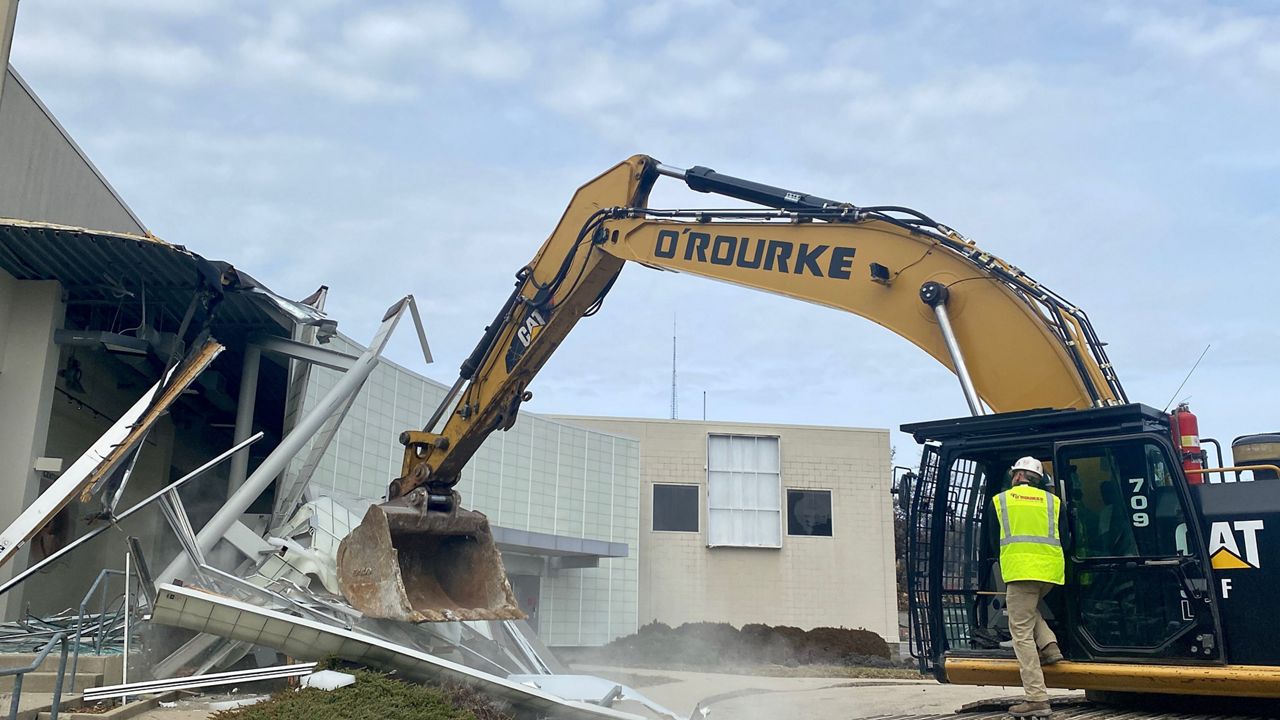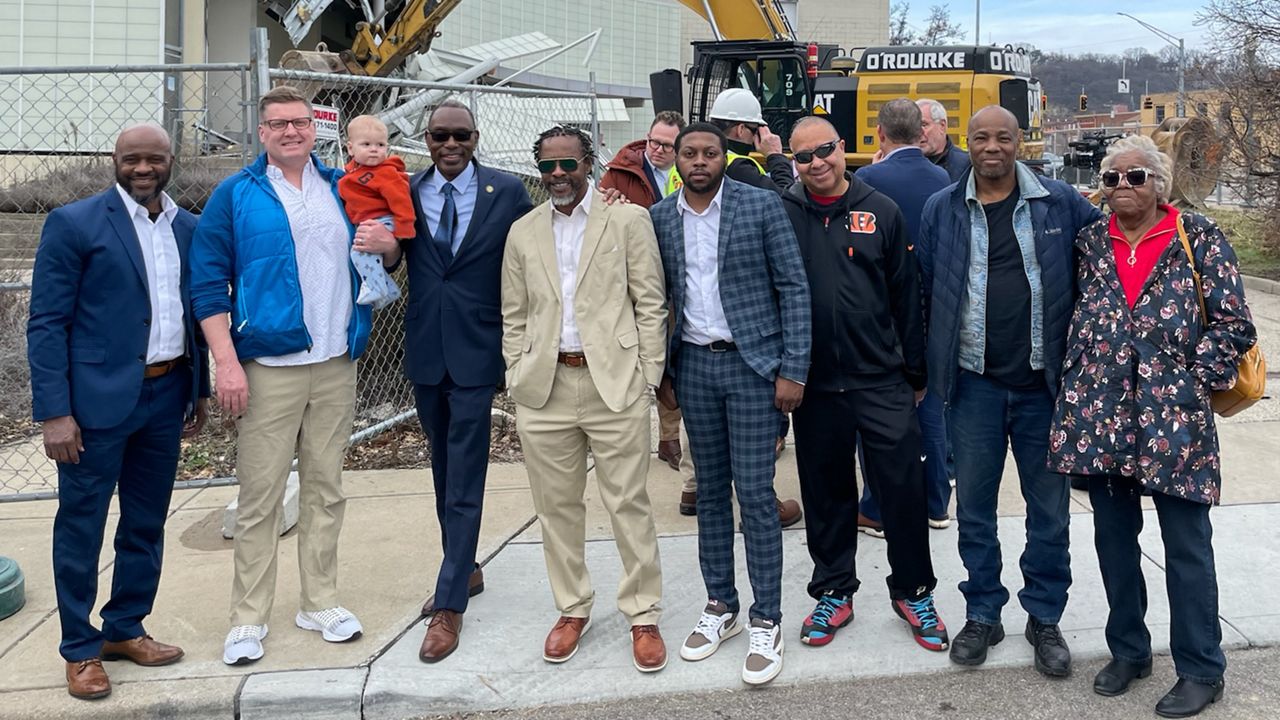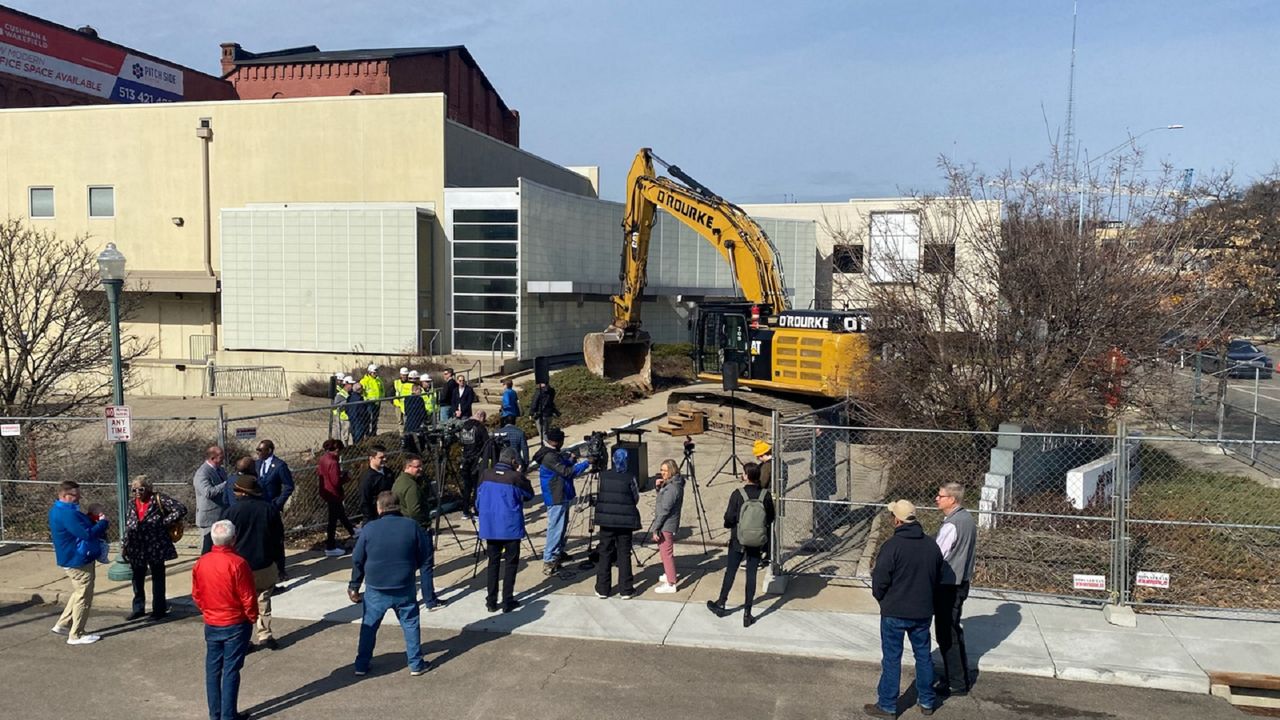CINCINNATI — FC Cincinnati is set to transform a corner of the city’s West End neighborhood with a $300 million project that leaders of the Major League Soccer franchise believe will compete with similar entertainment districts in sports cities across the country.
What You Need To Know
- FC Cincinnati plans to construct a 'community hub' outside TQL Stadium
- Over the next few years, the MLS club plans to construct a hotel, retail, apartments and other entertainment options
- Some residents voiced fears about displacement caused by the franchise buying local properties
- Other residents believe the district will bring jobs and energy to the neighborhood
Much of the work aims to enhance the game-day experience of soccer fans at TQL Stadium. Although some West End residents believe the 8.5-acre, mixed-use development could displace existing residents and businesses, there is also cautious optimism about what the project could mean for the neighborhood.
“As a community, we are excited about this once-in-a-lifetime opportunity to make transformational improvements to the West End,” said Chris Griffin, president of the West End Community Council.
Griffin was among a handful of residents joining FCC co-CEO Jeff Berding and project partners across the street from TQL Stadium on Wednesday to mark the start of the development on the multi-phased, several-year project.
Berding, who co-founded the franchise in 2015, kicked off the project by getting behind the controls of an excavator and knocking down a part of the former Cincinnati Ballet headquarters at Central Parkway and Wade Street.

The project is inspired by developments next to major league sports stadiums, such as Gallagher Way at Wrigleyville in Chicago; Titletown at Lambeau Field in Green Bay, Wisc.; and The Wharf between Nationals Ballpark and Audi Field in Washington, D.C.
The Cincinnati district will include apartments, office space, shops, restaurants and a privately owned green space, Berding said. FC Cincinnati announced last year that The Compendium will build a hotel outside the stadium. It’s being led by Josh Heuser, co-founder of Agar, an OTR-based marketing firm.
Berding, a former Cincinnati City Council member and Cincinnati Bengals executive, called the project an effort to build a “community hub” for guests beyond the soccer season.
Specific details aren’t yet available because the club hasn’t selected an architect, or completed a master plan.
“At FC Cincinnati, we’ve always said we intend to make Cincinnati a championship city — a championship soccer team, championship-level work in the community and beyond the soccer season, championship developments, like the new district, we are beginning today,” Berding said.
West End is a historically Black neighborhood near Over-the-Rhine and the city’s Central Business District. Unlike those neighboring areas, the West End has continued to endure decades of disinvestment and neglect.
The creation of TQL Stadium has been “nothing but good for his business,” said Marvin Smith, owner of Ollie’s Trolley. The hamburger and rib joint on Central Avenue has been full of fans from “3:30 in the afternoon to game time at 7:30 p.m. every home game for the past two years.”
But Smith recalled the relocation of some residents between 2018 and when the stadium opened in May 2021. Smith fears more residents may be forced to leave the neighborhood because of the new project.
“I’m not opposed to this district. In fact, the stadium and business it brings in just increases my property value,” said Smith, who didn’t attend Wednesday’s media event. “I just want to make sure (FCC) is fair in how they deal with the existing businesses and residents as part of this process.”
On Wednesday, Berding noted that the initial focus on the project is the three buildings currently owned by the organization. He referred to that as Phase 1.
One of those is the former home of the Cincinnati Ballet, vacant since the arts organization moved to a newly built site in Walnut Hills in 2021, and the Tri-State Wholesale Building Supplies, Inc. Demolition is expected to be completed this summer, according to FC Cincinnati.
But there are plans to purchase more properties in the “supersite” of the project area near the stadium, Berding said. He mentioned it will include the area between Liberty Street, Central Parkway, John and Wade streets.
“All the property that either we own, or at some point where we would have an interest, we’ve had very ongoing, very open conversations with property owners,” he said. “There are plenty of property owners who have asked us to buy, some outside of the (supersite) area.”
Noah O’Brien, vice president of the West End Community Council, said community leaders are sensitive to concerns about the project leading to gentrification and displacement. But he doesn’t believe this development will lead to a forced exodus of any sort.

About 70% of current West End rental units are income-based and have income restrictions as a legal requirement well into the future, O’Brien said
“As a community, the high level of existing income-restricted units reduces the risk of displacement and gives us the ability to embrace business opportunities that bring jobs and opportunities for residents,” he added.
O’Brien, who’s lived in the neighborhood for more than a decade, believes the project has the potential to improve the quality of life for residents.
He cited the struggles of the neighborhood business district on Linn Street, lined by a large number of empty storefronts in the City West development. Many of those spaces have been empty since being constructed 20 years ago and several “still have gravel floors,” O’Brien added.
“We have to leave our neighborhood to go to a restaurant. We have to leave our neighborhood to go to a pharmacy. We have to leave our neighborhood to go to attractions and things to do,” O’Brien said. “It shouldn’t have to be like that.”
The West End Community Council and the FC Cincinnati Community Coalition — which works with the organization on issues, like game-day parking and neighborhood marches before matches, have been “very supportive,” Berding added.
While the stadium was being built, FC Cincinnati signed a community benefits agreement (CBA) to provide $100,000 every year for 30 years to the neighborhood to support various programs for residents. It includes funding scholarships for West End students and grants that funded the creation of a student garden at Hays-Porter School and other projects.
The CBA also has a separate requirement to support youth athletic programming, covering everything from sponsoring a youth soccer league and providing stipends to coaches, O’Brien said.
“We know that this development doesn’t mean that the West End has reached the status of a mixed-income community, but this is a good first step or baby step, to bringing jobs, amenities and balanced housing options in this community,” he added
FC Cincinnati will serve as master developer and operations manager for the new district. They’ll engage third-party consultants to help execute a master development plan, said Chad Munitz, FCC’s chief development officer.
Munitz stressed the project will take seven or eight years to fully complete. The first buildings should be finished by late 2025, he said.
Marquee Development, a real estate developer with professional sports experience, is serving as the initial consultant.
The organization worked on Gallagher Way in Chicago and the North Loop Green next to Target Field, the home of the Minnesota Twins.
FC Cincinnati plans to hire an architect and construction management company soon, Berding said. He also pledged to meet or exceed the city and the Port’s inclusion goals for construction of this project.
O’Rourke, which is handling the demolition, is a certified Women’s Business Enterprise.
“We’re excited and ready to go,” Berding said.





